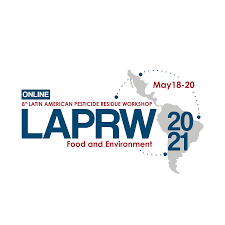Ver ítem
- xmlui.general.dspace_homeCentros Regionales y EEAsCentro Regional Mendoza - San JuanEEA MendozaPresentaciones a Congresosxmlui.ArtifactBrowser.ItemViewer.trail
- Inicio
- Centros Regionales y EEAs
- Centro Regional Mendoza - San Juan
- EEA Mendoza
- Presentaciones a Congresos
- Ver ítem
Influence of two cooking methods of chard on imidacloprid and spinosad residues
Resumen
Leafminer flies, thrips, aphids and whiteflies are the most common pests of chard (Beta vulgaris var. cicla). Intense damage not only reduces chard yield, but also the quality of leafy vegetables. The pesticides widely used against them are imidacloprid and spinosad.
The ingestion of small traces of these pesticides for prolonged periods of time can affect the health and well-being of the consumer.
The objective of this work was to determine the
[ver mas...]
Leafminer flies, thrips, aphids and whiteflies are the most common pests of chard (Beta vulgaris var. cicla). Intense damage not only reduces chard yield, but also the quality of leafy vegetables. The pesticides widely used against them are imidacloprid and spinosad.
The ingestion of small traces of these pesticides for prolonged periods of time can affect the health and well-being of the consumer.
The objective of this work was to determine the influence of two cooking methods of chard, microwave and boiling, on the pesticides under study. Imidacloprid OD 20% (90 cm3.hL-1) and spinosad 48 SC (15cm3.hL-1) were applied in a chard crop in a farm located in Rodeo del Medio, Guaymallén, Mendoza. In order to have enough residue to observe the behavior of the pesticides tested, the harvest was carried out on the same day of spraying. Two tests and uncooked control were performed with three replicates each. Boiling test (H), consisted of a pot with boiling water, added 300g of unwashed leaf chard, left to cook for 8 minutes, then drained and processed.
Microwave test (M), consisted of microwave cooking of 300g of unwashed leaf chard in polyethylene bags for a 900-watt microwave oven for 5 minutes. Once cold, it was processed. For the analysis of pesticide residues, the QuEChERS method (EN 15662) was
performed. Imidacloprid and spinosad were quantified by UHPLC (ESI +) - MS / MS. To calculate the influence of the treatments carried out, they were compared to the control. Imidacloprid residues in chard were reduced 80% in treatment H and 12% in treatment M. Spinosad residues increased 33% in treatment H and 6% in treatment M. Imidacloprid assay shown a greater reduction in treatment H compared with treatment M, probably caused by the high-water solubility of this pesticide (610mg. L-1). Regarding spinosad, both treatments revealed that the pesticide concentrated, probably due to the low solubility in water (7.6 mg. L-1). The high level of residues from treatment H could be due to the greater weight loss of chard compared to treatment M. We conclude that the behavior of the pesticides tested depends on the cooking methods used and their solubility.
[Cerrar]

Descripción
Poster
Fuente
8th Latin American Pesticide Residues Workshop (LAPRW) Food and Environment. On line event. May 18-20, 2021
Fecha
2022-01-03
Editorial
Ministerio de Desarrollo Agropecuario de Panamá
Formato
pdf
Tipo de documento
documento de conferencia
Palabras Claves
Derechos de acceso
Abierto
 Excepto donde se diga explicitamente, este item se publica bajo la siguiente descripción: Creative Commons Attribution-NonCommercial-ShareAlike 2.5 Unported (CC BY-NC-SA 2.5)
Excepto donde se diga explicitamente, este item se publica bajo la siguiente descripción: Creative Commons Attribution-NonCommercial-ShareAlike 2.5 Unported (CC BY-NC-SA 2.5)


